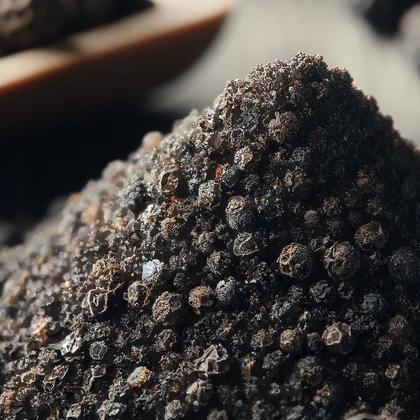Showing results for 'Black Pepper'
close
Black Pepper

Black pepper (Piper nigrum) is a flowering vine in the family Piperaceae, cultivated for its fruit, which is usually dried and used as a spice and seasoning. When dried, the fruit is known as a peppercorn. When fresh and fully mature, it is approximately 5 millimetres (0.20 in) in diameter, dark red, and, like all drupes, contains a single seed. Peppercorns, and the ground pepper derived from them, may be described simply as pepper, or more precisely as black pepper (cooked and dried unripe fruit), green pepper (dried unripe fruit) and white pepper (ripe fruit seeds).
Black Pepper Pairs With:
Food Item
Flavor Affinity Level

Did you know there are 465 food flavor pairings in my database for Black Pepper available. What you are seeing above is a random list of 30 items which pair with Black Pepper.
For the entire list, beautifully formatted, enter your email address and click the download button below, then I'll email it to you as a PDF.
Black Pepper Properties:
| Food Property | Type | Description |
|---|---|---|
| Flavor Profile | Spiciness | Black pepper is known for its spicy and pungent flavor profile, adding heat and depth to dishes. |
| Texture | Graininess | Black pepper typically has a coarse and grainy texture due to being ground from peppercorns. |
| Aroma | Volatile Compounds | Black pepper has volatile compounds that contribute to its strong and distinct aroma. |
| Color | Natural Pigments | Black pepper gets its color from natural pigments in the peppercorns. |
| Nutritional Value | Micronutrients | Black pepper contains micronutrients such as manganese, vitamin K, and iron, which contribute to its nutritional value. |
| Cooking Behavior | Heat Conductivity | Black pepper does not significantly impact heat conductivity during cooking. |
| Water Retention | Black pepper does not impact water retention during cooking. | |
| Oil Absorption | Black pepper may absorb some oil during cooking, depending on the dish preparation. |
Food Pairing App - Version 1.2.0
